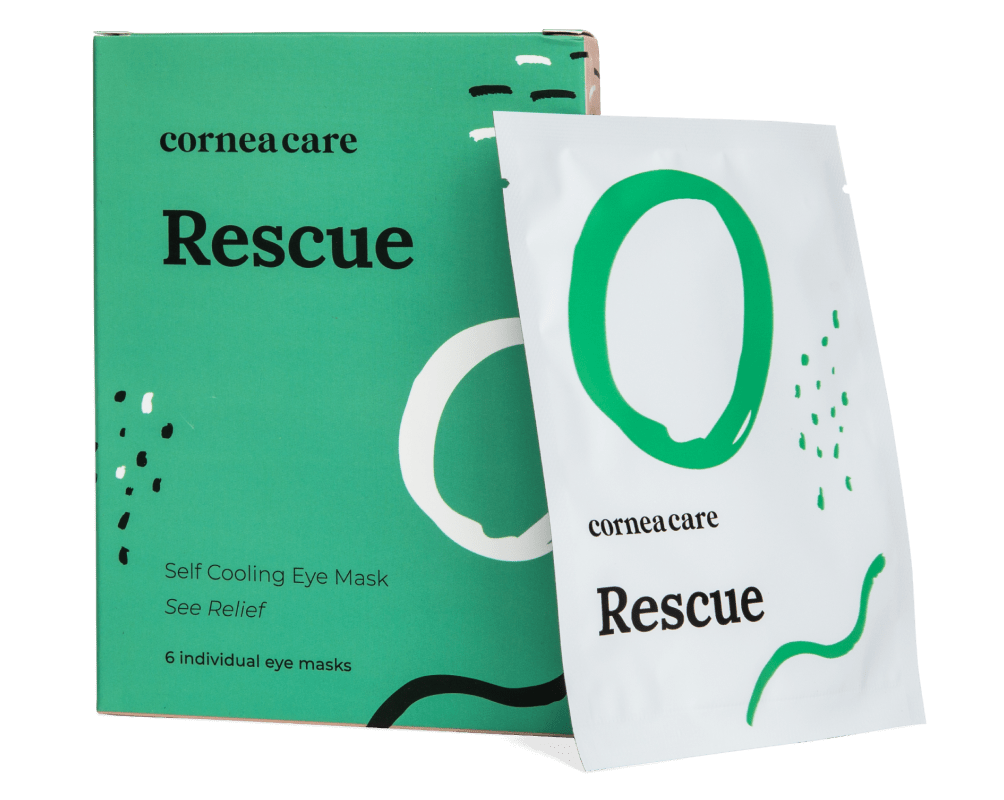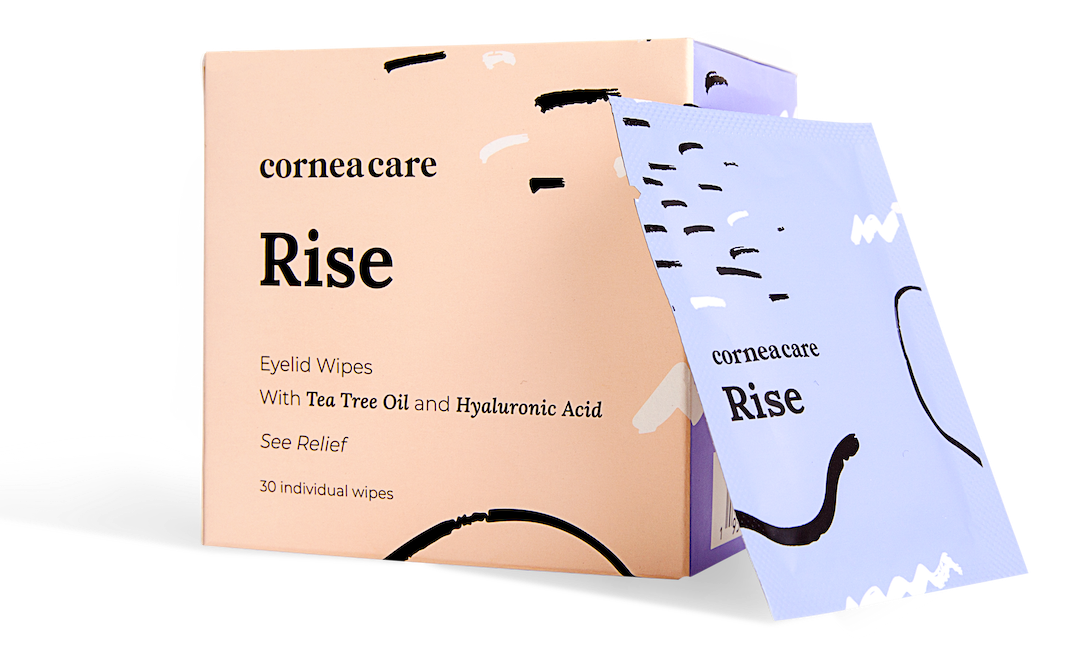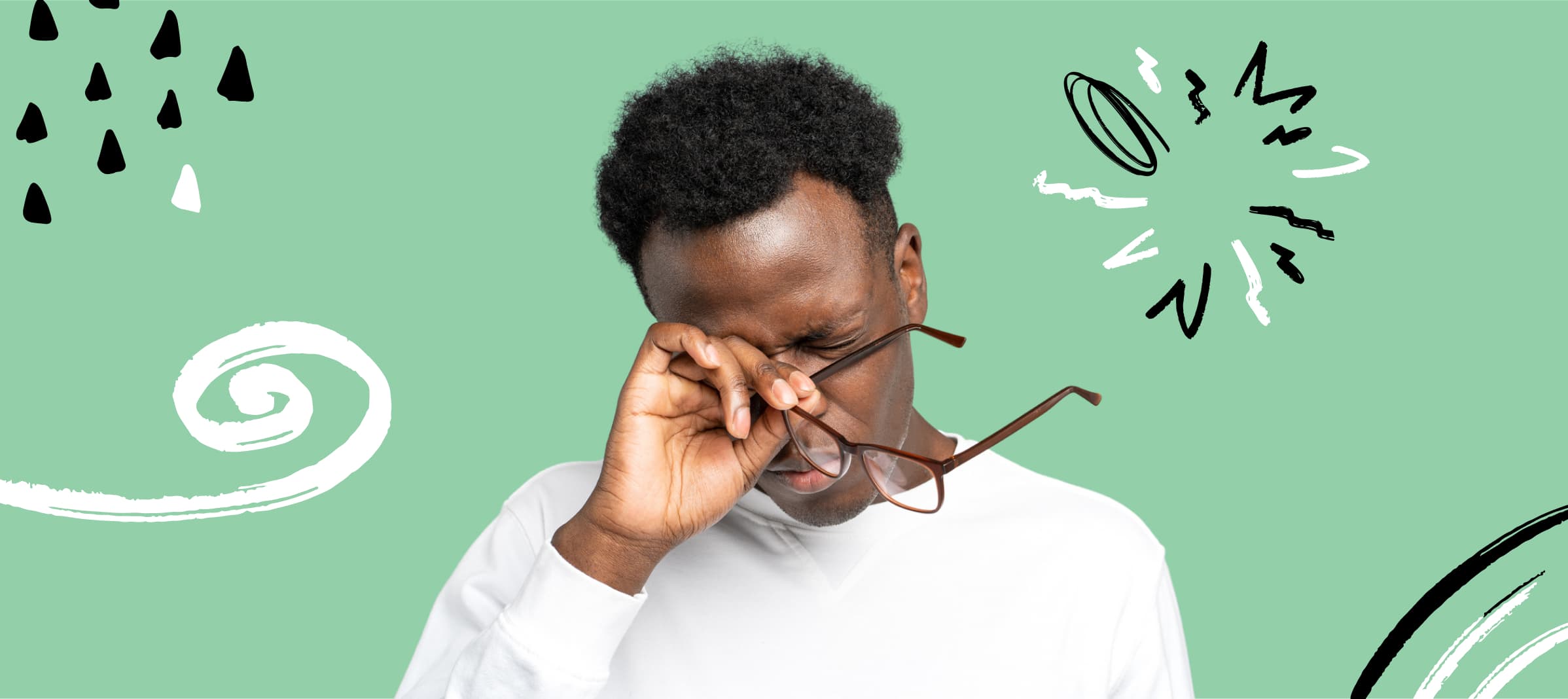How Long will my Eye Strain Last?
Eye strain is a combination of symptoms often caused by extensive use of digital screens, including smartphones, tablets, and computers. It can also occur due to focused work like reading or sewing, long-distance drives, or lack of sleep.
Eye strain is a common condition that causes discomfort that may distract you from work or online entertainment. The good news is it’s not serious and can be prevented with small changes. Treatment of your symptoms is pretty simple, and you’ll find lots of tips in this article.
Key Points
- Eye strain is a common, uncomfortable (though not serious) condition that can be prevented and treated with simple lifestyle changes.
- One of the most common causes of eye strain is prolonged use of digital devices and taking regular breaks can help.
- If you have symptoms that last for hours or days at a time, you should see your eye doctor.
moisturize your skin,
what about your eyes?
Symptoms of Eye Strain
When you experience eye strain your eyes feel fatigued and you may feel the need to close them to rest. Other common symptoms can include:1
- Light sensitivity
- Watery eyes
- Dry eyes
- Burning, redness, or itchy eyes
- Blurred vision or double vision
- Headache, neck or shoulder pain
- Trouble concentrating
Common Causes of Eye Strain
Eye strain, also called eye fatigue, feels like having tired eyes that may be sore and irritated. The condition may be temporary or chronic. Symptoms are caused by prolonged focus on a task such as reading, writing, or sewing without taking adequate breaks. Driving long distances can also lead to tired eyes.
Poor lighting can cause your eyes to feel tired and sore. Working on a bright screen in a dark room can lead to eye strain. However, it’s not just dim lighting that can tire out your eyes. Long periods in front of bright lights such as a ring light or fluorescent light in the workplace, can also be problematic.
Lack of sufficient sleep can cause or exacerbate symptoms brought on by focused work or digital device usage.
Computer Vision Syndrome
Computer vision syndrome is another name for the symptoms of digital eye strain which can include eye discomfort, blurred vision, dry eyes, and neck and shoulder pain. Studies show that nearly 90 percent of digital device users experience eye strain symptoms.2
Limiting your use of digital devices when possible, and taking regular breaks, can prevent symptoms.

All Rounder
Eyelid Hygiene Plan 3
Perfect for eye dryness, burning, itching, grittiness, crusting/flaking of eyelashes and inflamed/swollen eyelids. Free shipping 📦.
Try today - $60
Eye Conditions Related to Eye Strain
Eye strain usually goes away with rest or simple at-home treatment in less than an hour. If you’re experiencing frequent discomfort that persists for hours or days at a time, you may have an underlying eye condition that’s causing or worsening your symptoms.
Dry Eye Disease
Dry eye disease, also known as dry eye syndrome, can cause symptoms of eye strain. Caused by an unstable tear film due to poor tear development or rapid tear evaporation, dry eye disease leaves your eyes dry and irritated.
Excessive use of digital screens can cause or exacerbate dry eye disease symptoms. While you work on a computer screen, watch videos, or play online games, you naturally blink less. Without blinking, your eyes become dry causing eye strain and symptoms of dry eye disease.
The first step to managing dry eye disease is good eyelid hygiene. In addition, you can try artificial tears to lubricate the eyes.
Refractive Errors
Refractive errors can cause eye strain as your eyes struggle to compensate for nearsightedness (myopia), farsightedness (hyperopia), or astigmatism. Aging eyes become less able to focus on objects up close, called presbyopia.3
You may need corrective lenses if eye fatigue is frequent. For trouble with close-up vision, you can purchase over-the-counter reading glasses. However, for best results, see your eye doctor (optometrist or ophthalmologist). They will conduct an eye exam, test for vision problems, and screen for eye conditions. If necessary, your eye doctor will prescribe corrective lenses (contact lenses or eyeglasses) to help you see better and avoid eye fatigue.

Rescue
Cold Compresses
Perfect for sudden flare-ups of eye dryness, pain, burning, and swollen/inflamed eyelids. Free shipping 📦.
Try today - $12
Treating and Preventing Eye Strain
Occasional eye strain can be managed and prevented with a few lifestyle changes during your daily activities. With these tips, you may experience less eye strain or eye strain that goes away in less time:
- Limit digital device use when possible and take frequent screen breaks with the 20/20/20 rule: every 20 minutes look at something 20 feet away for 20 seconds4
- Notice how little you blink while looking at screens and make an effort to blink more
- Try using CorneaCare artificial tears as needed throughout the day to prevent dryness
- Use a humidifier where you work or read, especially if you have dry eye symptoms
- Avoid poor lighting by lighting the room to match the brightness of your computer screen, smartphone, or TV
- Increase the font size and turn up the contrast on your digital devices, then set them to dark mode in the evening
- Create an ergonomic workspace with your computer screen placed just below eye level about arm’s length in front of you5
- Ease eye strain flare-ups with a refreshing CorneaCare hydrogel cold compress
- Rest tired eyes with a soothing CorneaCare self-heating warm compress before bed
- Eat a healthy, balanced diet and drink plenty of water, and fill any nutritional gaps with CorneaCare eye vitamins and omega-3 supplements
- Get at least 7 to 8 hours of sleep each night for good health overall6
Finally, use your glasses if you have them! We know it takes time to get used to wearing glasses at first, but if eye strain is causing you discomfort, it may be as simple as grabbing those glasses to find relief in minutes.
How Long Does Eye Strain Last?
When eye strain starts, how long symptoms last depends on a few factors. These include the cause of your eye strain, how you treat it, and your overall eye health.
If you’ve been looking at a digital screen for hours when symptoms start, taking a break may be all you need to feel better in just a few minutes. Any of the simple changes above can ease eye strain within 10 to 30 minutes for most people. In general, eye strain symptoms should pass within an hour with at-home treatment.
If an underlying eye problem is at the root of your symptoms, it may take longer. Your eye doctor can recommend treatment options, which may take days or weeks to relieve symptoms completely. Try artificial tears and rest your eyes with a cold or warm compress to feel better in the meantime.
When to See a Doctor
In most cases, eye strain lasts just a few minutes to an hour and is typically not serious. Resting your eyes or improving your lighting can often bring quick relief. However, if your eye strain is severe, occurs frequently, or lasts for hours or days at a time, you should see an eye doctor.

Rise
Eyelid Wipes
Perfect for eye dryness, itching, burning, and crusting/flaking of eyelashes. Free shipping 📦
Try today - $25
FAQs
In most cases, eye strain goes away on its own when you rest your eyes or adjust your lighting. Other simple treatments to relieve symptoms include artificial tears and resting with a cold or warm compress over your eyes for 10 to 15 minutes. If symptoms persist for hours or days at a time, see your eye doctor.
Eye strain is uncomfortable but not serious. Common symptoms include tired sore eyes, burning and redness, watery or dry eyes, and blurred vision. When your eyes are strained you may feel the need to close them which may bring relief.
The best way to relieve eye strain fast is to rest your eyes. Blink a few times, or use artificial tears if needed, and close your eyes gently until they’re rehydrated. Rest with a cold or warm compress over your closed eyes for 10 to 15 minutes. If you’re working or reading in a dimly lit space, turn on the lights.
The most common causes of eye strain are prolonged use of digital devices such as computers and smartphones, reading in dim lighting, and long-distance driving. With a few simple lifestyle changes, you can prevent and relieve symptoms.
If you have eye strain symptoms that last for hours or days, even when you’re not using screens, reading, or driving, make an appointment to see your eye doctor. They can rule out any serious eye conditions and offer a treatment plan to relieve your symptoms.
Putting It All Together
Eye strain is caused by prolonged focus on an activity and is often associated with extensive use of digital devices. Prioritizing healthy eye care can help prevent symptoms, and the simple changes we shared above can affect how long eye strain will last.
At CorneaCare, we help you take control of your eye health to prevent vision and eye problems so that you can live a healthy and fulfilling life.
What’s Next
Want to learn more about keeping your eyes healthy for life? Check out more helpful articles on the Eye Health and Wellness blog.





